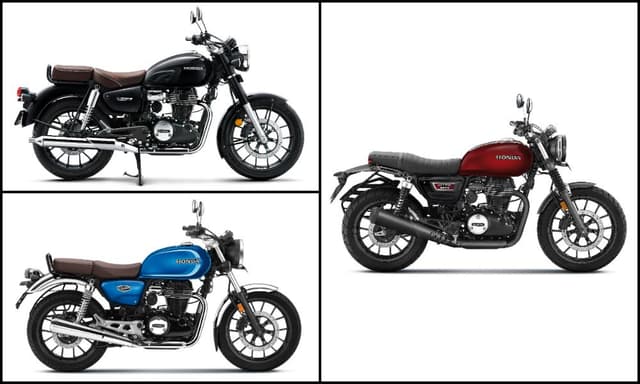Wheel Alignment: All You Need to Know
If you've passed by any tyre shop, you would have noticed that there are boards put out mentioning these two very words and you don't really pay attention to them but here we are, telling you, why you should.

Highlights
We've said this on countless occasions that wheels form the most important part in a car as they are the only thing between you and the road, it is the wheels that connect you to the road. Taking care of them forms a vital part of maintaining your car and though we've told you about checking the tread of the tyres before monsoon, here we're talking to you about wheel alignment.
If you've passed by any tyre shop, you would have noticed that there are boards put out mentioning these two very words and you don't really pay attention to them but here we are, telling you, why you should. When the car comes out of a showroom, it is the manufacturer who takes care that the wheels are properly aligned. This includes the correct geometric angles of the caster, toe and camber.
As the car starts to age, there is wear and tear of these parts. Usually for most petrol heads, it is intuition and know-how that makes them head in the direction of shop that provides the wheel alignment service, but how does a lay man identify that there is a problem?
Well, there are a few ways to find out. The first and most obvious give away of misaligned wheels, is the steering wheel. If it is crooked when driving in a straight line, it's a sign you should not ignore.
Also Read: Is Filling Nitrogen in Your Tyres a Good Bet?
The second way is if the car starts pulling to either side of the road and you are struggling to keep it in a straight line. Though this is a method to check, the problem could also arise if the tyres are underinflated. Either ways it is better to get it checked.
The third thing you have to check is the wear and tear of all the tyres. If the wheels aren't aligned, the tread on one side will be thinner than the other and this is a clear sign that the pressure on the tyres is not equal. There are other reasons too for tyre wear, like problems with the suspension set up but the above mentioned signs are a way of understanding that something's not right.
Once you are at the outlet where wheel alignment is done, it is advisable to get all four wheels aligned. Now-a-days thanks to technological advancement; the alignment is completed in a matter of minutes. The alignments are measured electronically and hence are pretty accurate. The people at the outlet will also rotate the tyres and this is pretty normal. So they might interchange it front to back or diagonally, depending on the electronic reading. You will see a difference in the way the car drives after a wheel balancing is done.
Now there is no defining how many times you need to balance those wheels. But then again it all depends on how much you run the car. So, we'll make it a little simpler; for those using the car daily, it is advisable to align the wheels twice a year and for those weekend users, an annual visit is all you need.
Thus wheel balancing helps you, not only to take care of your tyres, but also improve overall driving dynamics.
If you've passed by any tyre shop, you would have noticed that there are boards put out mentioning these two very words and you don't really pay attention to them but here we are, telling you, why you should. When the car comes out of a showroom, it is the manufacturer who takes care that the wheels are properly aligned. This includes the correct geometric angles of the caster, toe and camber.
As the car starts to age, there is wear and tear of these parts. Usually for most petrol heads, it is intuition and know-how that makes them head in the direction of shop that provides the wheel alignment service, but how does a lay man identify that there is a problem?
Well, there are a few ways to find out. The first and most obvious give away of misaligned wheels, is the steering wheel. If it is crooked when driving in a straight line, it's a sign you should not ignore.
Also Read: Is Filling Nitrogen in Your Tyres a Good Bet?
The second way is if the car starts pulling to either side of the road and you are struggling to keep it in a straight line. Though this is a method to check, the problem could also arise if the tyres are underinflated. Either ways it is better to get it checked.
The third thing you have to check is the wear and tear of all the tyres. If the wheels aren't aligned, the tread on one side will be thinner than the other and this is a clear sign that the pressure on the tyres is not equal. There are other reasons too for tyre wear, like problems with the suspension set up but the above mentioned signs are a way of understanding that something's not right.
Once you are at the outlet where wheel alignment is done, it is advisable to get all four wheels aligned. Now-a-days thanks to technological advancement; the alignment is completed in a matter of minutes. The alignments are measured electronically and hence are pretty accurate. The people at the outlet will also rotate the tyres and this is pretty normal. So they might interchange it front to back or diagonally, depending on the electronic reading. You will see a difference in the way the car drives after a wheel balancing is done.
Now there is no defining how many times you need to balance those wheels. But then again it all depends on how much you run the car. So, we'll make it a little simpler; for those using the car daily, it is advisable to align the wheels twice a year and for those weekend users, an annual visit is all you need.
Thus wheel balancing helps you, not only to take care of your tyres, but also improve overall driving dynamics.
Last Updated on August 22, 2015
Stay updated with automotive news and reviews right at your fingertips through carandbike.com's Google News













